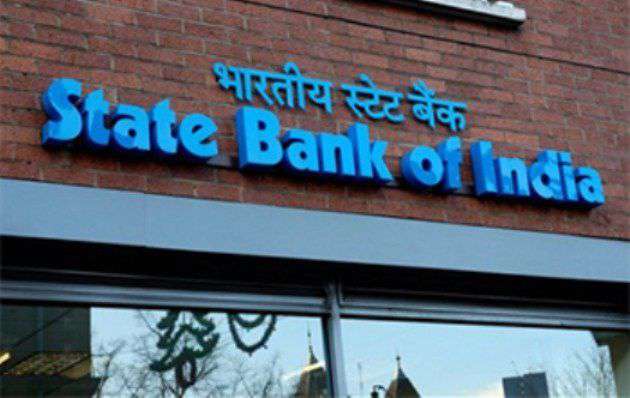India’s largest bank, State Bank of India (SBI) on Friday reported a “disappointing” set of numbers for the three months through December, logging in a net loss of Rs 1,886.57 crore after a massive under-reporting of dud assets in the past fiscal and reverses in treasury operations.
The bank had reported a net profit of Rs 2,152 crore in the same quarter last fiscal year. The bank hinted at more pains in the next quarter as the impaired assets issue and the lack of resolution continues, but said it hopes for a better fiscal 2019.
On a standalone basis, the bank reported a wider loss at Rs 2,416 crore. “The current quarter is definitely disappointing, but going forward, there is a lot of optimism. From April, we will all start on a positive note. I don’t want to sound very, very optimistic on the fourth quarter, neither very pessimistic,” chairman Rajnish Kumar told reporters.
Over Rs 25,000 crore of loans slipped into the non- performing assets category in the reporting quarter, driven primarily by under-reporting of NPAs or divergence to the tune of Rs 23,330 crore for FY17.
The gross NPA ratio crossed double digits at 10.35 per cent from 7.23 per cent a year ago. It can be noted that this is the first time the state-run behemoth has witnessed divergences, which was a common thread binding all the private sector banks.
Kumar said 90 per cent of the divergences were already recognised as stressed assets, and recognising them as NPAs was only a question of “timing”. A bulk Rs 10,000 crore of divergences were from the power sector and Kumar said further pain is in the offing, with the bank’s high exposure to the sector. The overall provisions for bad assets shot up to Rs 17,759 crore from Rs 7,244 crore.
Over Rs 6,000 crore in provisions were due to the divergences. But this has had a positive impact as it increased the bank’s overall provision coverage ratio to 65.92 per cent. The apart from provisioning, the numbers were impacted by a Rs 3,500-crore hit from mark-to-market losses because of the hardening of yields, while Rs 700 crore had to be set aside on a wage hike for its 2.66 lakh staff who will be getting a 10 per cent hike.
A Rs 2,000-crore drop in treasury profits to Rs 1,000 crore also hit bottomline. The numbers were crimped by higher credit cost as well which for the first nine months has shot up to 3.18 per cent.
Its watchlist accounts has now come down to Rs 10,400 crore, and Kumar asserted that there is no “chunky” asset that can slip into NPAs now. He said the bank is targeting to lower the slippages to under 2 per cent in FY19 from 4.17 per cent in the first nine months of FY18, and also credit costs to 2 per cent.
The divergences found by RBI had a net impact of a little over Rs 16,000 crore in the slippages for the current quarter, as it had already recognised over Rs 2,800 crore as NPAs in the June quarter, while there was an upgrade in one account of over Rs 4,000 crore.
The bank, which has a Rs 78,000-crore exposure to the 40 accounts being resolved through the insolvency process, does not see much impact of such accounts on its bottomline as the provisions for these are already at 60 per cent levels. Kumar, however, exuded confidence that up to 3 of these accounts will be resolved before end-March, while the rest in the first list of 12 will happen in the June quarter.
He also said there may also be cases where there can be a write-back of already provided for accounts. Kumar said the bank has signed an agreement with the government to raise Rs 20,000 crore in core equity from non- promoter investors, beyond the Rs 8,800 crore it expects through a preference issue to the government soon.
The Rs 20,000 crore infusion will reduce government stake by up to 4 percentage points, he said. Kumar made it clear that the new infusion is not for covering loan losses through provisions, but would serve as growth capital.
The bank feels economic revival is underway which has led it to up its loan growth target to 10.3 per cent in FY19 from the over 2 per cent achieved in the first nine months.
On the operations side, the core net interest income grew 5.17 per cent to Rs 18,688 crore on a sequentially higher net interest margin of 2.45 per cent, while the other income plummeted 29.75 per cent to Rs 8,084 crore on account of treasury operations.
The overall capital adequacy ratio was at 12.68 per cent with the core tier-I at 10.30 per cent. When pointed out that SBI’s performance is generally taken as a proxy for the state of the economy, Kumar said SBI’s 90-day performance should not be equated with the broader economic activity.
Reiterating that the bank is doing well on various other measures, he tried to paint an optimistic picture for the future saying, “there is banking beyond NPAs as well.
We are at the end of the NPA cycle and the scenario for next year looks very good.” The SBI scrip closed 1.68 per cent down at Rs 296.40 on the BSE as against a 1.18 per cent correction in the benchmark.








